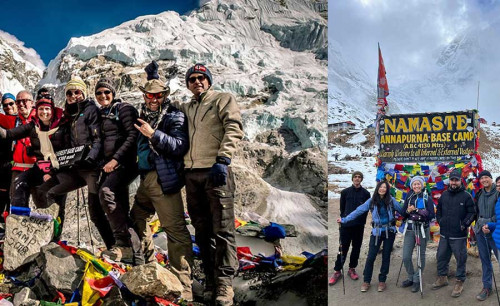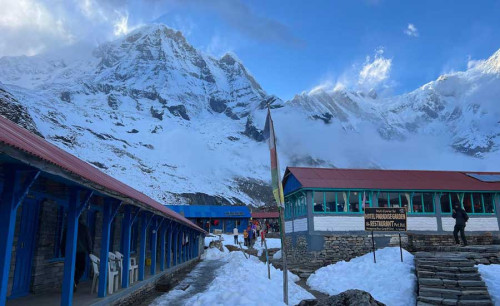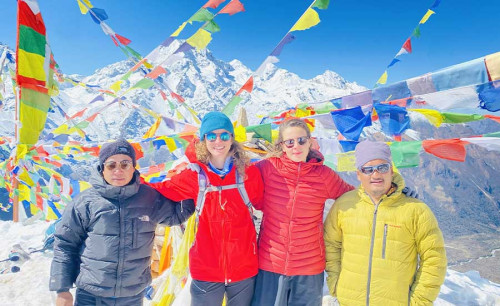The Future of Trekking in the Nepal Himalayas: An Analysis
Published On : 16th Oct, 2024 By Himalayan Dream Team

A land of towering peaks and unparalleled scenery, the Nepal Himalayas have always been the premier destination for trekkers from all over the world. As a result of increased adventure tourism, trekking in this celebrated region will take on new dimensions in the future. Greater numbers of travelers desiring out-of-the-way trips mean that environmentally friendly and sustainable approaches to trekking are today's imperative in the travel industry. The trekkers are also flocking to less crowded routes like the Mardi Himal Trek and Mohare Danda Community Trek, which are offering more serenity and less ecological degradation.
The future for trekking in Nepal's Himalayas is finding a balance between increased tourism with the preservation of culture and environmental sustainability. While increasing numbers of tourists ensure the local economy benefits, there are significant challenges regarding overcrowding on the trails, waste management, and climate change. In fighting these battles, the trekking routes must adapt to sustainable practices that will provide an authentic cultural experience for the traveler. Successive treks in Nepal will depend upon how local people, tourist operators, and the government vary in observing safeguards to protect the scenic beauty and cultural heritage of the area for generations to come.

Emerging Trends in Trekking
Several of these trends are thus grooming the future of trekking in the Nepal Himalayas. Overall, these trends create different opportunities and challenges for both trekkers and local communities.
Growing Popularity of Less Popular Trails
As famous treks like Everest Base Camp and the Annapurna Circuit become increasingly crowded, trekkers have been turning their sights to the less-frequented trails of Manaslu Circuit, Kanchenjunga Base Camp, and the Dolpo region. These offer more secluded and real experiences in pristine landscapes and immersions in cultures, with greater possibilities of spreading the economic benefits from tourism to remote areas. However, with greater numbers visiting these areas, management of environmental impact and the preservation of cultures will be important concerns in these areas.
Eco-Friendly and Sustainable Trekking
In the Himalayas, sustainability is becoming a big issue, as both trekking companies and tourists are adapting eco-friendly practices that range from lessening waste to supporting conservation initiatives. Renewable energy sources like solar-powered lodges have already been in full swing, and there is high appeal toward low-impact travel in order to protect the fragile environment. It is by such sustainable practices that the natural beauty of the Himalayas can be preserved for generations to come, as tourism continues to grow.
Integration of Technology
Technology is improving the trekking experience in the Himalayas-from GPS navigation and weather apps to high-tech gear that makes treks both safer and more accessible. It has become quite easy for trekkers to track in real time the route and conditions, while high-tech equipment like lightweight gear and portable solar chargers enhances comfort and efficiency. Beyond that, digital platforms can help with information on accommodation options and trail conditions, thus making it easier for any level of trekkers to plan.
Cultural Immersion and Authentic Experiences
The demand of the trekkers includes an authentic cultural experience as a part of their journey in the Himalayas. Homestays, cultural tours, and community interactions have been fostering deeper experiences of the rich heritage in this region. The travelers are more willing to participate in the local practices, taste regional food, and learn the traditional ways of living. It is also a trend which will not only enrich the experiences but also help in preserving the culture of Himalayas and bring financial benefits to the residents.
Environmental and Cultural Considerations
The future of trekking in Nepal must address several environmental and cultural considerations to ensure sustainability:
Environmental Impact
The influx of trekkers can put significant strain on fragile ecosystems. Issues such as waste management, deforestation, and water pollution need to be addressed. Implementing strict environmental guidelines and promoting eco-friendly trekking practices are essential to mitigate these impacts.
Climate Change
The effects of climate change are increasingly evident in the Himalayas, with glaciers retreating and weather patterns becoming more unpredictable. Adapting to these changes requires proactive measures, such as developing climate-resilient infrastructure and promoting awareness among trekkers about the impacts of their activities.
Cultural Preservation
The rich cultural heritage of the Himalayan communities is a significant attraction for trekkers. Efforts must be made to preserve and promote local traditions, languages, and customs. This includes supporting local artisans, organizing cultural festivals, and incorporating cultural education into trekking itineraries.
Economic Impacts
Trekking is a major economic driver in Nepal, providing livelihoods for thousands of people. The future economic landscape of trekking involves several key aspects:
Job Creation and Local Economies
Trekking supports a wide range of jobs, from guides and porters to hotel owners and artisans. By promoting trekking in lesser-known areas, economic benefits can be distributed more evenly across the region. Investing in training and certification programs for trekking professionals can enhance service quality and create more opportunities.
Revenue Generation
The revenue generated from trekking permits, park fees, and related services is crucial for local and national economies. Ensuring that a fair share of this revenue is reinvested into community development and conservation projects is vital for sustainable growth.
Community-Based Tourism
Encouraging community-based tourism can enhance the economic benefits of trekking. This approach involves local communities in the planning and management of tourism activities, ensuring that they receive a fair share of the profits and have a say in the development process.
Challenges and Opportunities
The future of trekking in the Nepal Himalayas faces several challenges, but also presents numerous opportunities:
Infrastructure Development
Improving infrastructure, such as trails, bridges, and accommodations, is essential to accommodate the growing number of trekkers. This development must be done sustainably, with a focus on minimizing environmental impact.
Health and Safety
Ensuring the health and safety of trekkers is paramount. This includes providing adequate medical facilities, emergency services, and safety training for guides and porters. Addressing issues such as altitude sickness and access to clean drinking water is also critical.
Marketing and Promotion
Effective marketing and promotion strategies are needed to attract trekkers to lesser-known areas and during off-peak seasons. Utilizing digital platforms, social media, and partnerships with international travel agencies can help reach a broader audience.
Policy and Regulation
Developing and enforcing policies and regulations that promote sustainable trekking practices is crucial. This includes setting limits on the number of trekkers in certain areas, implementing strict waste management protocols, and ensuring that trekking companies adhere to ethical standards.
Innovative Eco-Friendly Initiatives
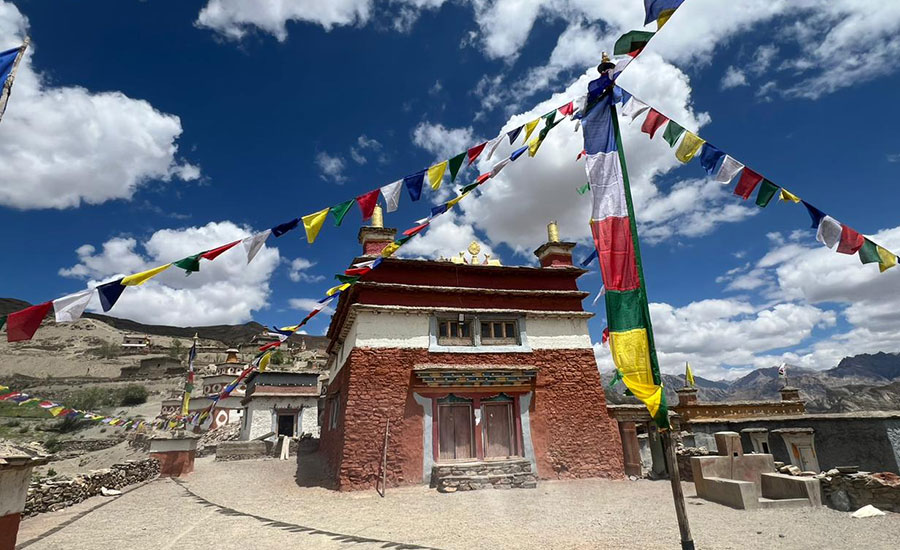
| Initiative | Description |
|---|---|
| Eco-Friendly Accommodations | The rise of luxury eco-lodges and campsites using sustainable materials, solar power, and water conservation systems. These offer a premium experience with minimal environmental impact. |
| Waste Management Strategies | Implementation of waste management policies on trekking routes, emphasizing proper disposal, recycling, and the use of biodegradable products by trekkers and operators. |
| Carbon Neutral Treks | Efforts to offset carbon emissions through tree planting, use of clean energy, and carbon offsetting programs, ensuring a carbon-neutral trekking experience. |
| Sustainable Trail Development | Upgrading trails with minimal ecological disruption, using local materials and traditional techniques, to reduce soil erosion and preserve the natural landscape. |
| Community-Based Tourism | Promoting community-based tourism that involves locals in trekking operations, fostering economic benefits, cultural exchange, and conservation awareness. |
| Conservation Education and Awareness | Integrating educational elements into treks, where travelers learn about local ecosystems, biodiversity, and Nepal’s conservation efforts during their trekking experience. |
| Reduced Energy Consumption | Adopting energy-efficient practices in trekking, like using LED lighting, solar-powered devices, and minimizing fossil fuel use, to reduce energy consumption. |
| Promotion of Responsible Trekking Practices | Educating trekkers on eco-conscious practices, such as respecting wildlife, maintaining cleanliness on trails, and supporting eco-friendly products and services. |
| Partnerships with Environmental Organizations | Collaborating with environmental groups and NGOs to support conservation projects and promote sustainable tourism in the Himalayas. |
| Innovative Transportation Solutions | Introducing eco-friendly transportation options to trekking points, reducing the carbon footprint associated with travel to and from trekking areas. |
Luxury Trekking Experiences
While options for quaintly moderate treks and tours will be available, the traveler will still have the possibility of trekking or touring in comfort combined with adventure. From high-end lodges offering gourmet meals to helicopter returns, trekking no longer means one has to give up comfort to see the best of Nepal. These premium options allow adventurers to explore breathtaking landscapes and rich cultures of the Himalayas, indulging in top-tier amenities that ensure a memorable, luxurious journey.
Comfort Annapurna Base Camp Trek with Helicopter Return
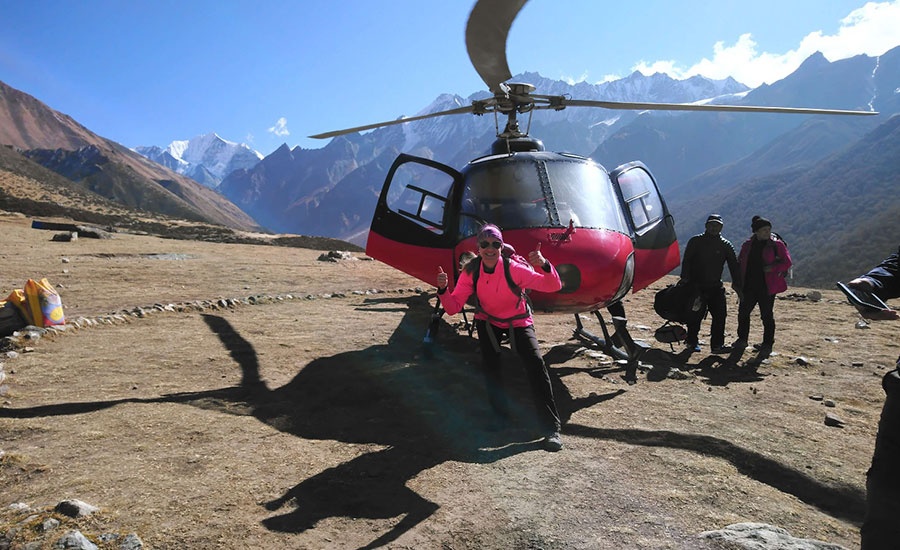
Comfort Annapurna Base Camp Trek with Helicopter Return is one of those perfect combinations of adventure and comfort for trekkers who desire to go through the beauty of the Annapurna region without getting the physical strain of long descent. This trek will take you from beautiful villages to the heart of rich forests to the famous Annapurna Base Camp, which is located at 4,130 meters above sea level and is surrounded by some of the highest peaks in the world. What makes this trek a little different is the return via helicopter that treats your eyes to aerial breathtaking views of the Himalayas while flying back to Pokhara.
This luxury trekking package provides an enriching experience: comfortable sleeping arrangements, entertaining guided tours, and succulent meals guarantee the perfect balance of adventure and comfort. This is the best option for those seeking to make full use of their trekking experience without the hard work of a complete return hike. The helicopter flight allows them to come back quickly and enjoy the scenery, making this trek ideal for those who wish to maximize their time in Nepal while minimizing fatigue.
Capture Nepal: A Photography Journey

Photography enthusiasts will want to capture the breathtaking scenery and colourful culture on a specially crafted tour called Capture Nepal: A Photography Journey. Take a journey through the most photogenic destinations of Nepal, which range from towering peaks of the Himalayas to rich cultural heritage that resides in Kathmandu and Pokhara. This tour offers expert photographers leading the journey, hands-on guidance, and unique opportunities to capture everything from the rising sun over the Himalayas down to daily life in traditional villages.
Such photography treks, which combine cultural shots with sceneries, make for a great combination for avid photographers and travelers alike. Besides expert guidance, you will be visiting key iconic sites and hidden gems to ensure that your portfolio is complete with some stunning images. The Nepal journey will always create unforgettable memories of its landscapes and people and remarkable photos, whether as a professional photographer or enthusiastic amateur.
Premium Everest View Trek for Adventurous Over 50s
The Premium Everest View Trek for Adventurous Over 50s is ideal for those who enjoy a comfortable yet exhilarating experience as they grow older. There is a panorama of spectacular views of Mount Everest and other towering peaks that can be enjoyed without the high physical exertion required at higher altitudes. With a leisurely, more relaxed approach to each day's hike, utilizing top-quality hotels, the beauty of the Khumbu can be enjoyed at a gentle pace-taking in panoramic views from some of the most celebrated viewpoints such as Tengboche and Namche Bazaar.
The trek has been devised with comfort in mind, combining adventure and relaxation in equal measures to cater to older adventurers. This superior trek for travelers over 50 will take them into Nepal's grandeur without overexertion, putting together upmarket lodges, professional guides, and well-rounded cultural experiences into one fantastic journey. The Everest View Trek offers all the thrills of a Himalayan trek with premium services, thereby guaranteeing an unforgettable experience.
Premium Comfort Annapurna - Bandipur Trek

Premium Comfort Annapurna - Bandipur Trek combines the great rewarding exploration into the beauty of the Annapurna region with a cultural retreat in the beautiful hilltop town of Bandipur. This trip comprises spectacular natural scenery along with an insight into the culture, presenting panoramic Himalayan views while staying in luxury communities that will provide comfort and authentic local experiences. This is good for people who want to balance physical activity with rest, as the days would involve walking through most parts at a moderate pace, allowing ample time to take in mountain sceneries.
After ample trekking in the Annapurna region, take the opportunity to visit Bandipur, a wonderful town with ideally preserved traditional architecture and rich cultural history. The combination of trekking and cultural immersion, with comfortable accommodations, a guided tour, and great customer service, makes for an ideal package for trekkers who want to travel in style and explore the best of both the natural and cultural worlds of Nepal.
Conclusion
The future of trekking in the Nepal Himalayas is filled with potential and promise. By embracing emerging trends, addressing environmental and cultural considerations, and focusing on sustainable economic growth, the trekking industry can continue to thrive.
Efforts must be made to balance the demands of tourism with the need to preserve the natural and cultural heritage of the region. Through collaboration between government agencies, local communities, trekking companies, and trekkers themselves, a sustainable and prosperous future for trekking in the Nepal Himalayas can be achieved.
This analysis highlights the importance of proactive planning and responsible practices in shaping the future of trekking. By prioritizing sustainability, cultural preservation, and economic inclusivity, the Nepal Himalayas will remain a beloved destination for adventurers and nature enthusiasts for generations to come.
Recent Posts
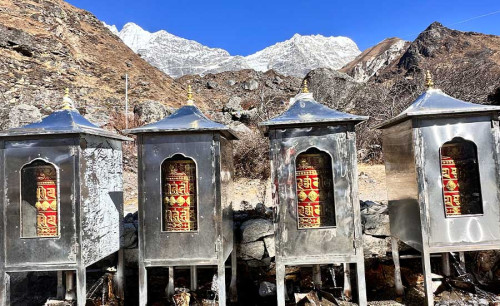
2nd Dec, 2025
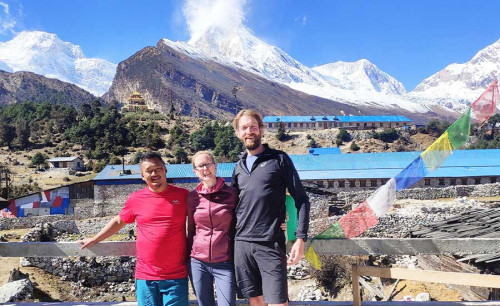
24th Nov, 2025
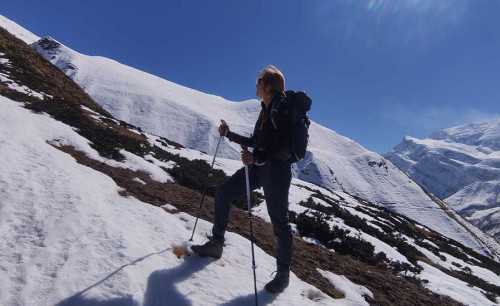
21st Nov, 2025
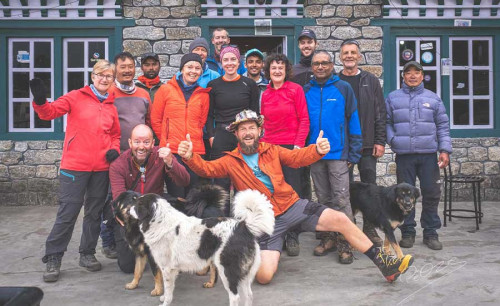
10th Nov, 2025
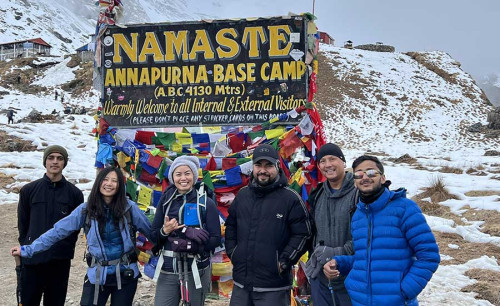
9th Nov, 2025

25th Oct, 2025

22nd Oct, 2025

17th Oct, 2025

17th Oct, 2025

13th Oct, 2025


